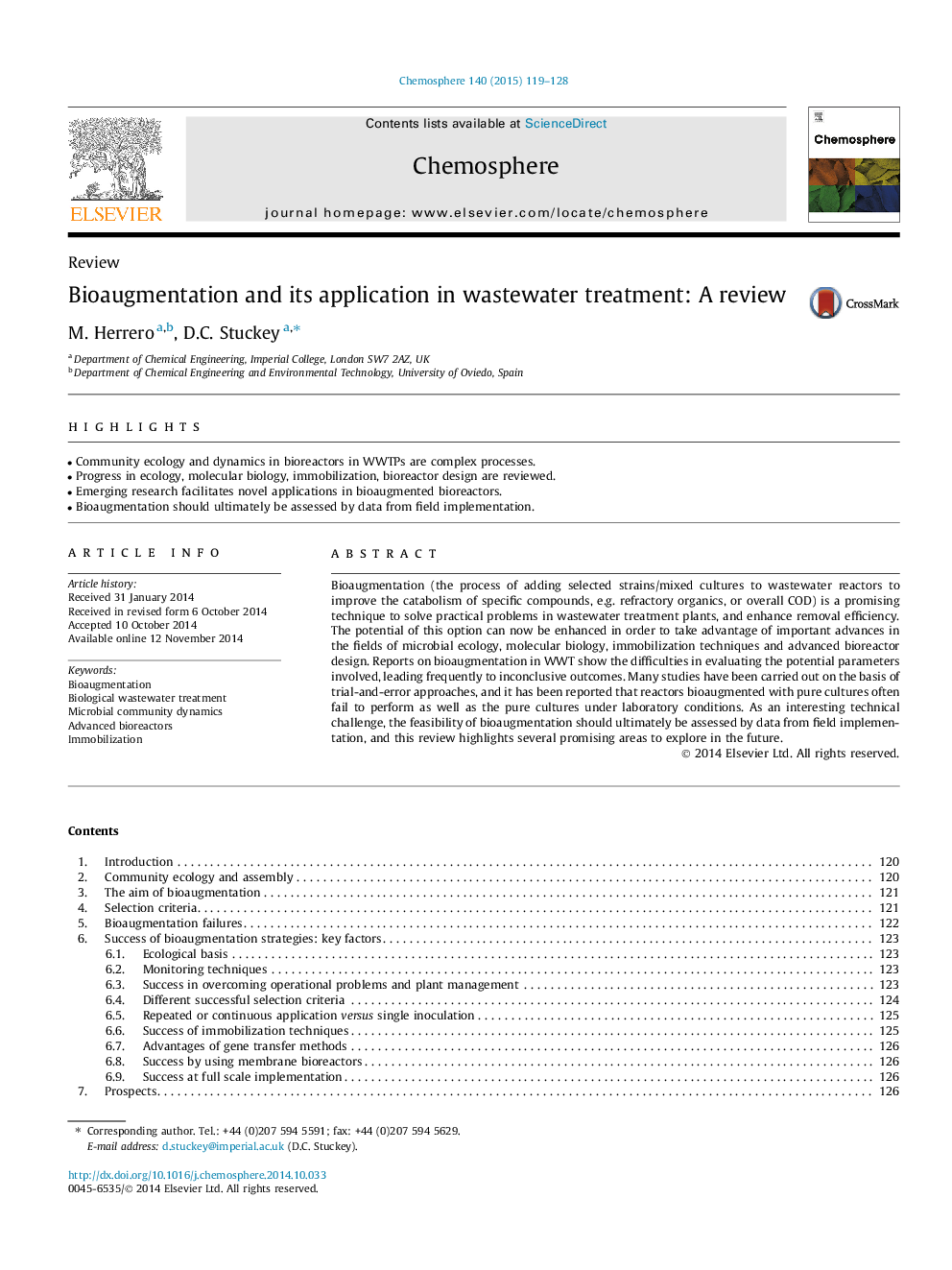| کد مقاله | کد نشریه | سال انتشار | مقاله انگلیسی | نسخه تمام متن |
|---|---|---|---|---|
| 4408110 | 1618831 | 2015 | 10 صفحه PDF | دانلود رایگان |

• Community ecology and dynamics in bioreactors in WWTPs are complex processes.
• Progress in ecology, molecular biology, immobilization, bioreactor design are reviewed.
• Emerging research facilitates novel applications in bioaugmented bioreactors.
• Bioaugmentation should ultimately be assessed by data from field implementation.
Bioaugmentation (the process of adding selected strains/mixed cultures to wastewater reactors to improve the catabolism of specific compounds, e.g. refractory organics, or overall COD) is a promising technique to solve practical problems in wastewater treatment plants, and enhance removal efficiency. The potential of this option can now be enhanced in order to take advantage of important advances in the fields of microbial ecology, molecular biology, immobilization techniques and advanced bioreactor design. Reports on bioaugmentation in WWT show the difficulties in evaluating the potential parameters involved, leading frequently to inconclusive outcomes. Many studies have been carried out on the basis of trial-and-error approaches, and it has been reported that reactors bioaugmented with pure cultures often fail to perform as well as the pure cultures under laboratory conditions. As an interesting technical challenge, the feasibility of bioaugmentation should ultimately be assessed by data from field implementation, and this review highlights several promising areas to explore in the future.
Journal: Chemosphere - Volume 140, December 2015, Pages 119–128